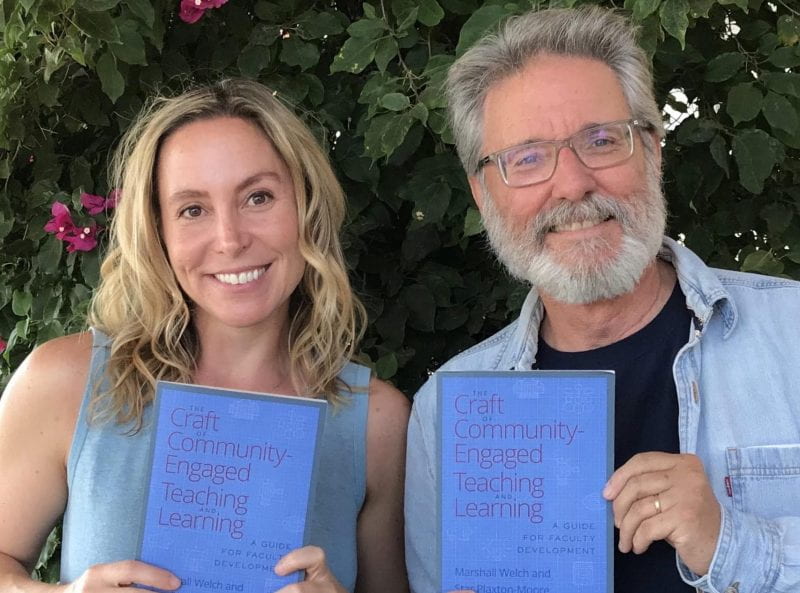
Craft of Community Enagagement
In what came to her as a natural growth from previous projects, McCarthy Center Director for Community-Engaged Learning, Star Moore, found it necessary to craft a tool-kit for the art of service-learning as a means to guide faculty through the theoretical foundations of community engagement, the practical process of designing and implementing a community-engaged course, and the reflective practice of determining how their teaching, research, and service intertwine with their own identities and civic commitments. (Answers edited for brevity)
Why do you refer to CEL as a craft in the title ?
We (myself and co-writer Mashall) really fell in love with the notion of community-engaged teaching and learning as a craft because we wanted to signal that it’s not enough to just learn and apply the technical, logistical, and practical elements of how to design a CEL course. In addition to skills and knowledge, faculty have to activate and examine their own values, beliefs, and commitments. They have to be able to trace their course practices and elements to guiding principles and philosophies, and perceive their work as part of a larger movement or field. They have to be in a creative and evolving relationship with students and community. Community-engaged work also involves many of the skills that artists and artisans embody: a vision of what is possible, attention to detail, and pragmatism in the face of obstacles.
How has your “tool-kit” proven effective out in the field with educators?
The toolkit, which provides practical activities to accompany the content in the workbook, grew out of Marshall’s and my experiences of facilitating professional development with faculty, staff, community partners, and students. The activities are meant to help readers extend and apply what they are learning. Some of the activities provide opportunities for faculty to jot down ideas and plans for their courses, so they are very practical in nature. Others ask readers to speak back to theory and/or infuse it into their vision for a course. Still others guide faculty in personal and professional reflection. I have been using some of the activities with faculty at USF for years, but some of them were created, co-created, or adapted with permission from colleagues.
How did our founder, Leo McCarthy see/value community-engaged learning when he started the Center? What would he say about the evolution of service-learning to how you are defining it today?
I believe Leo knew from his own experience in public service that students can’t learn how to be in service to the common good just by sitting in a classroom, reading a textbook, and listening to lectures. Public servants are cultivated through direct experience in situations where their knowledge, skills, ethics, and ideals are put to the test. Students need professional mentors to guide them through navigating competing interests, and work contexts that present the complexity of real-world issues.
I think Leo would be proud and delighted to see how the McCarthy Center and faculty at USF are implementing community-engaged learning. I know he would appreciate our practice of guiding students to reflect on their civic commitments and roles in their community. I know he would agree with integrating experiences and curricula that provide lenses through which students can critically examine and interrogate power and oppression at the individual, institutional, and structural levels. I know he would value the way we prioritize authentic and reciprocal relationships with people leading change in our community and our world. These are all things that Leo himself did in his exemplary career as a public servant.

